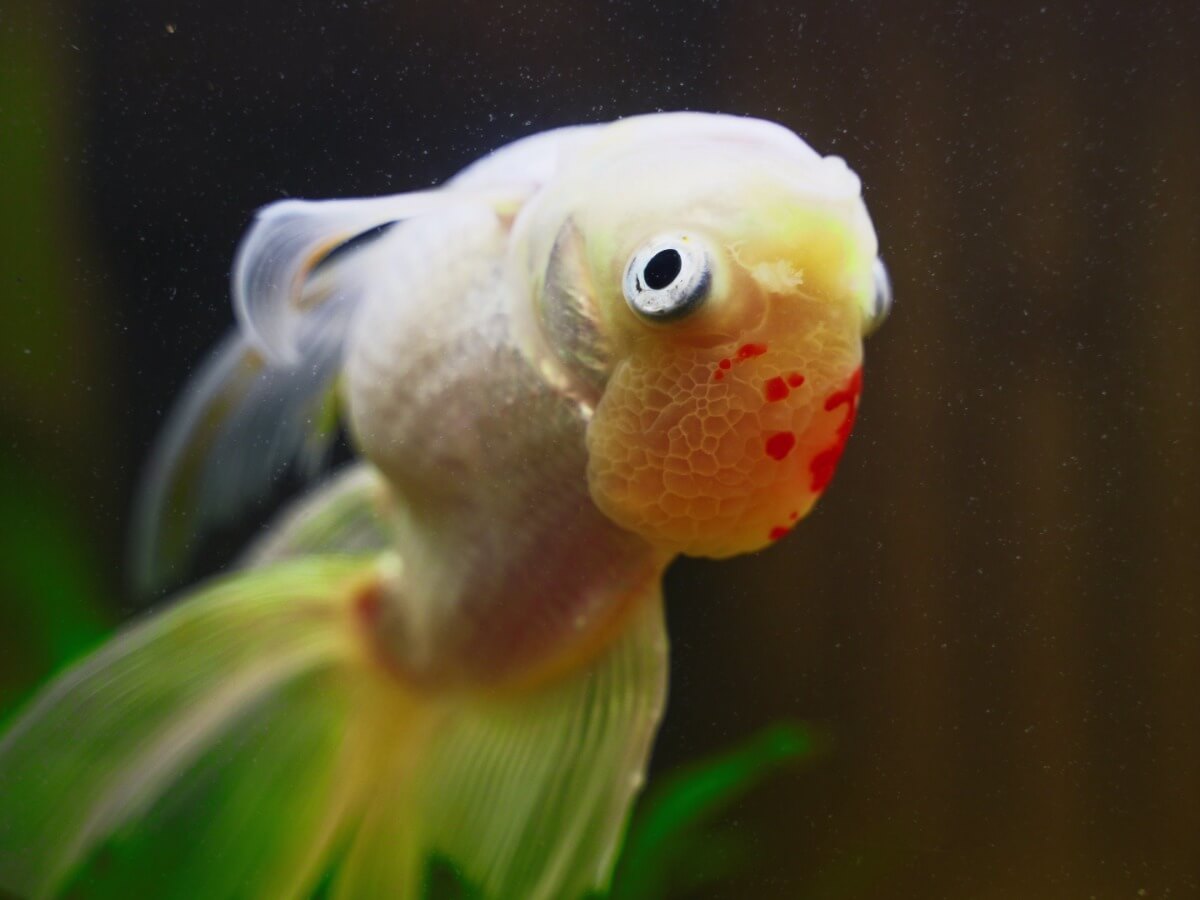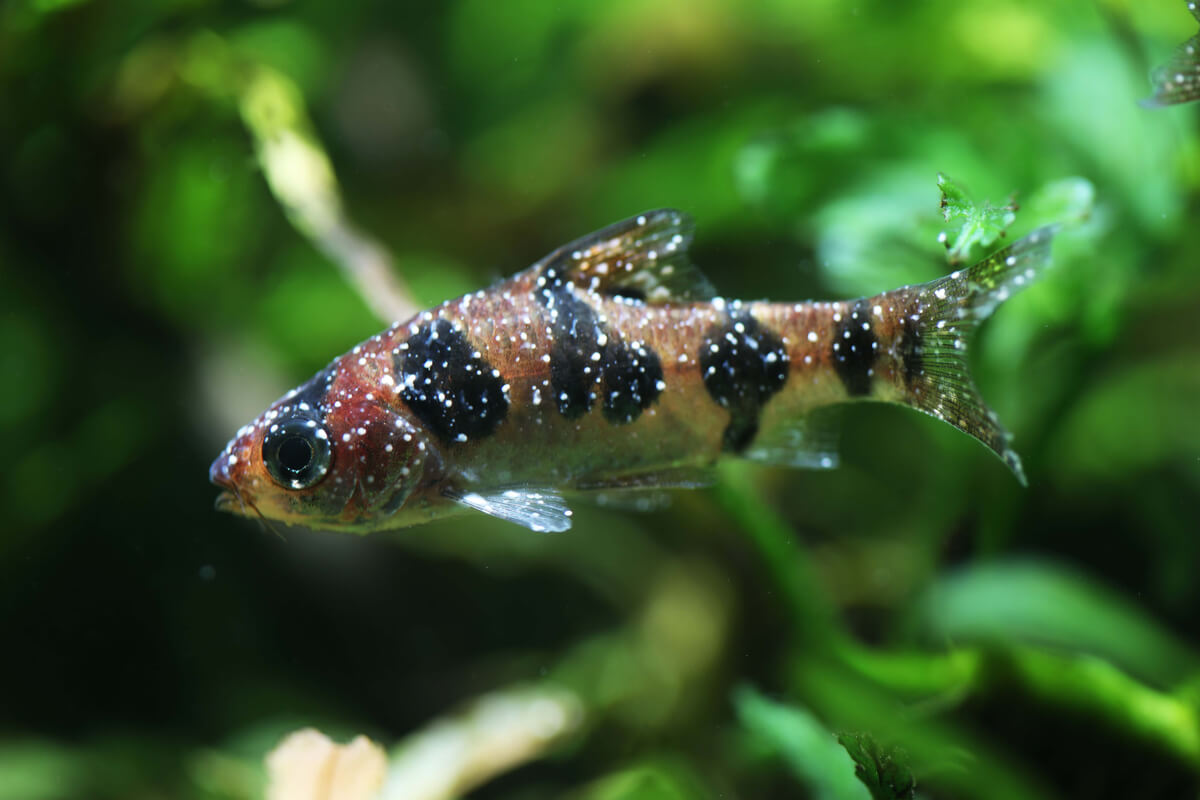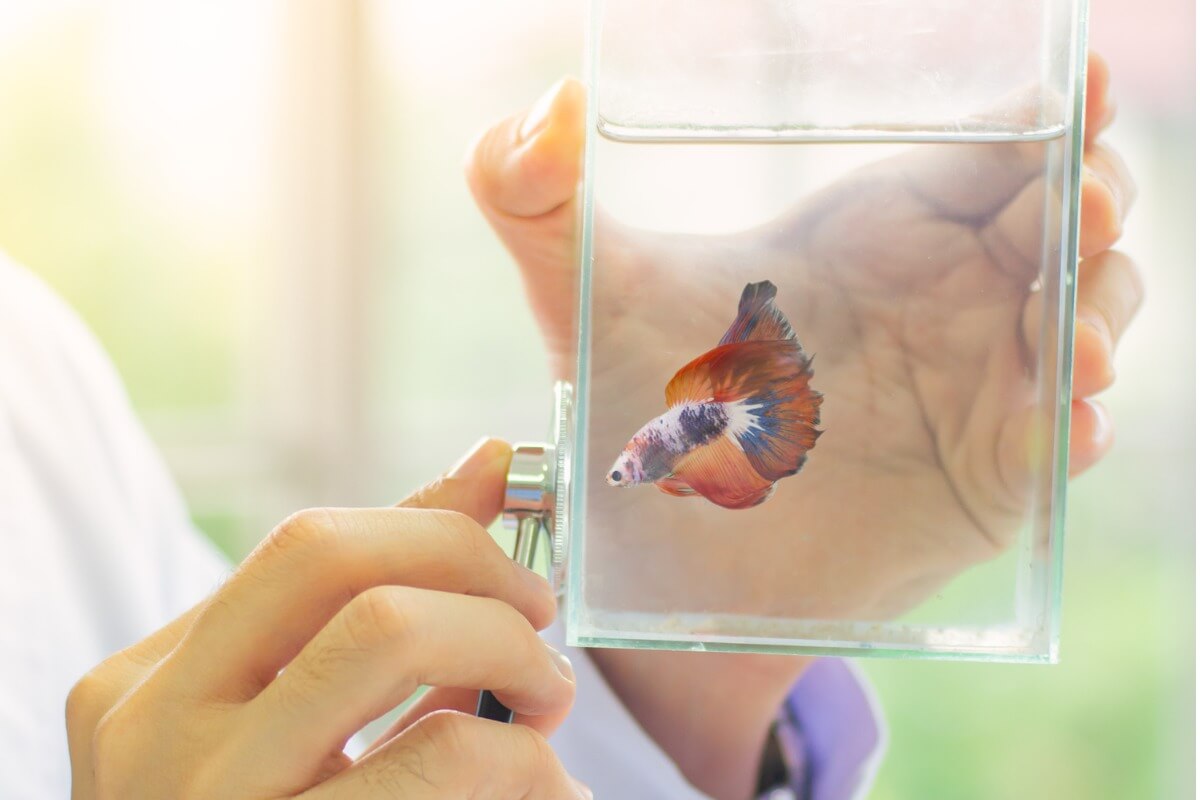12 Symptoms of a Sick Fish and What to Do

Many symptoms will show that a fish is sick. Every owner should take them seriously and not overlook them, otherwise the other members of the aquarium may also be threatened. Keep in mind that a fish tank is a small ecosystem, so it’s very easy for diseases and chemical imbalances to spread quickly. Find out how to identify a sick fish in this article.
The life expectancy of typical tropical fish isn’t very high (3-5 years), but this doesn’t mean that you should treat their death or lack of quality of life as normal. Owning an animal isn’t a game, so a visit to a specialist is essential in case of any worrying signs. Keep reading to find out 12 symptoms of a sick fish, and what to do in each case.
1. A sick fish: the fish isn’t eating
Omnivorous tropical fish eat for much of the day in their natural environment and, therefore, it’s usually recommended that owners dispense food on the surface of the tank every 12 hours. One of the first signs that a fish is sick is that it stops eating, as this makes no biological sense.
In these cases, it’s likely that you have overfed your fish and this is causing abdominal bloating and other problems. Remember that the golden rule isn’t to give them more food than they can consume in 2-3 minutes, and a maximum of twice a day. If you overdo it, the food will sink to the bottom and potentially lethal chemical imbalances in the water will occur.
This general rule applies to omnivorous fish, as large carnivorous fish can go considerably longer without feeding.
2. Swim sideways
Swimming sideways is a maladaptive behavior pattern in fish, as it causes them to lose their range of vision, mobility, and effectiveness in moving around the tank. Therefore, a fish that moves sideways and spasmodically is always a sign that they are sick.
This clinical sign is usually due to a failure of the swim bladder, the organ that enables fish to exchange gases with the environment and increase or decrease their buoyancy. The inflammation of the tissue of this structure is quite common in goldfish (Carassius auratus) and always requires veterinary attention.
Inflammation of the swim bladder causes 44% of visits to the vet in goldfish.

3. Difficulty in breathing on the surface
This symptom, rather than showing that a fish is sick, shows that there’s a problem at a chemical level in the aquarium. The correct amount of dissolved oxygen in the water is essential for the fish in the tank and they’ll start to gasp at the surface if there isn’t enough concentration of this gas. This can be due to excessive temperatures, overcrowding, and chemical mismatches.
In these cases it’s necessary to install an aerator. If the symptom continues, carry out a preventive water change.
4. The fish becomes isolated
Some tropical fish (such as zebra danios, tetra neons, or certain barbels) form schools that can range from six to dozens of fish. When a specimen in these species is sick, it isolates itself and stays away from the nucleus of activity. It’s best to separate it and place it in a “hospital” tank until you discover what’s wrong with it.
5. It has one eye protruding
Clinically this condition is known as exophthalmia. It can be unilateral (affecting one eye) or bilateral (affecting both) and is caused by direct injury, chemical imbalances in the water, and fluid accumulation in the animal’s body. This symptom indicates that the fish is very sick (or is being attacked by others in the aquarium), so it requires immediate attention.
6. Scales are raised
Again, this sign has a special name, and is known as dropsy. In this condition, the fish’s body will swell up, the scales will be raised, and will give the appearance of being bristly. It’s a very common condition in goldfish, as their ovoid shape makes them easy to identify.
The accumulation of fluids or compounds may be due to infection, an imbalance in the fish’s homeostasis due to chemical changes, or intestinal impaction. Unfortunately, raised scales indicate that the animal doesn’t have long to live.
7. It has white spots on its body
The ciliate protozoan Ichthyophthirius multifiliis causes the disease known as white spot in aquariums. This pathogen is located on the skin of the infected fish and initiates its cycle by producing a visible whitish cyst, hence the name of the pathology. It’s a very infectious condition that spreads rapidly.
In fish that tolerate thermal changes, it’s recommended to raise the aquarium temperature to 30° C (86° F), as the parasite will die and the encysted ones will fall off under these conditions. It’s also necessary to buy antiparasitic solutions and apply them in the whole aquarium before the fish die.

8. It makes jerky movements
Another symptom that a fish is sick is that it rubs itself jerkily against objects in the aquarium, something known as flashing. This is usually an indication that the animal is infected with a skin pathogen, such as an anchor worm of the genus Lernaea. Take a good look at its skin and scales and go to the vet if the behavior continues.
Flashing is the only way for the fish to scratch.
9. The fish has mucus accumulated in its body
All fish have a thin mucous layer that covers their bodies and helps them swim in the water with very little resistance. If the fish is infected by certain types of bacteria, this mucus will become much more opaque and obvious. This sign indicates that the animal is very sick and probably has little time left to live.
10. It stays on the bottom of the aquarium
A surface fish that stays on the bottom of the tank is either very sick or resting. If this behavior continues, go and see a vet. It’s likely that your aquarium isn’t set up correctly as regards chemicals, or the animal may be suffering from an infection.
11. Discolored gills
This symptom that shows a fish is sick isn’t easy to see with the naked eye, but, unfortunately, it becomes very evident when the animal has already died. The gills of a healthy animal are highly vascularized and blood flows continuously through them and, consequently, they have a very strong red color.
Gill discoloration can be an indication of bleeding elsewhere in the body, parasitic infestation, malnutrition, and many other things. Either way, it always shows that something is wrong with the fish’s body.
12. The fish has torn fins
This condition is known as fin rot. It’s an extremely common disease in home aquariums and is caused by bacterial and fungal infections, although the main suspect is always Pseudomonas fluorescens. Infection is caused by overcrowding, poor water conditions, or improper installation (such as bowl tanks).
This condition requires treatment of the water with antibiotics, antifungals or a mixture of both.

The symptoms of a sick fish are many and varied. Isolating it will always be the first step and, after that, the most appropriate thing to do in almost all cases is to take it to the vet. Sometimes it’s necessary to treat the whole aquarium at the same time, as most infections in these animals are very contagious.
All cited sources were thoroughly reviewed by our team to ensure their quality, reliability, currency, and validity. The bibliography of this article was considered reliable and of academic or scientific accuracy.
- Zamora, J. C., Miranda, A. P., Sevilla, M. V. Á., Peinado, C. L., & Gómez, J. B. La transposición didáctica del funcionamiento hidrostático de un órgano complejo: la vejiga natatoria de los peces. Didáctica de las Ciencias Experimentales y Sociales, (27).
- Obregón, D. A. A. (2005). El Ichthyophtirius Multifiliis y la dosificacion para combatirlo. REDVET. Revista Electrónica de Veterinaria, 6(3).
This text is provided for informational purposes only and does not replace consultation with a professional. If in doubt, consult your specialist.